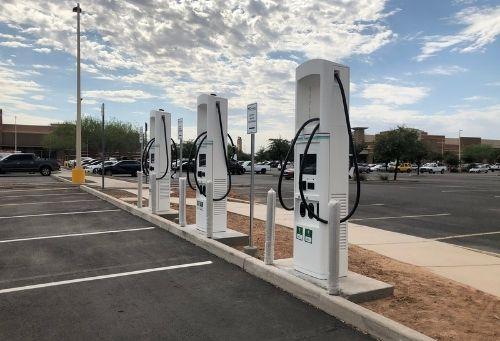
If you own an electric vehicle, you’ll want to maximize its power with vehicle to grid technology. This new technology allows your car to communicate with the power grid and supply your home with a secondary source of energy when your solar panels may not be enough. Homeowners may find themselves curious about what this advancement could mean for their homes and budgets.
When you’re ready to make a difference in the environment and your monthly bills, here is what you need to know about V2G technology for your home:
Vehicle to grid technology (V2G) allows you to use the charge from your car to power your home. The electricity from your car can be drawn into the smart grid, helping to supplement the energy grid during hours where prices are at their highest. It can also be helpful during a power outage as it can allow you to keep the lights on and the refrigerator running.
Some homeowners use V2G technology as a backup for their solar systems. If they want to use more electricity at night than what their solar system stored during the day, their vehicle power can be used to bolster other renewable energy sources. Instead of relying on battery backup systems, you can use your vehicle as a backup source of power.
The concept behind this technology is known as smart charging (V1G charging). It occurs when a homeowner or EV owner is completely in control of how their car is charged. Keep in mind that you’ll need to monitor the battery levels of your vehicle at all times; you don’t want to find yourself stranded because you didn’t plan ahead for your daily commute.
During this type of charging, you can increase or decrease the charge as necessary. V2G technology takes this just a bit further and contributes some of its charged power back to the grid from the car battery.
Chances are that V2G technology sounds like a great idea. Many homeowners mistakenly believe that it’s easy to implement, but it can actually be quite challenging. You will need to install a charging station in your home along with special software that can communicate with the power grid. This will allow it to examine the system’s demand at all times.
Bidirectional technology is the cornerstone when it comes to allowing your vehicle to communicate back with the grid. Trust the installation of your new system to the experts so that you can successfully start saving more money.
It might seem like the best choice to implement vehicle to grid technology in your home, but it helps to have a thorough understanding of what you can gain. First and foremost, V2G tech is great for the environment. It is a source of clean energy that promotes zero carbon emissions, making it a positive wave for the future.
In addition to helping the environment, it also can offset the cost of owning an electric vehicle. By using it to sell back extra power from the car, you can use those savings to cover the payment on your new car or to pad your savings account.
If you are more into the tech side of things, you might be pleased to learn that V2G technology also makes for more effective power distribution. Electric vehicles lead to an increased demand on the system, especially during peak hours when people are running their lights, HVAC systems, and more.
Instead of paying for the power during peak usage hours, the power company often rewards its clients with lower rates for using power in the off-hours. With a little savvy planning, you can cash in on this trend and reduce the need for power during peak times using V2G technology.
Are you convinced that vehicle to grid technology is the right fit for your home? You might be wondering how you can implement this technology at your house. It sounds quite simple to do, but it can be a bit complicated. Most of the EV charging stations installed in homes are made to be unidirectional. This means that energy flows only one way: From your home to your electric vehicle.
Instead, you’ll need your charging station to be bidirectional. This will allow your car to communicate effectively with the power grid to determine what is needed and when.
While this might sound easy, the truth is that there are very few regulations when it comes to this new technology. Consult with your local regulations to learn more about how you can start to take advantage of this V2G technology to save more money and help the environment at the same time.
Those who plan to utilize V2G technology will want to pay careful attention to just how much of their car’s battery power they are using to power their home or office. You’ll need to maintain a certain amount of power in your car battery to get you around town or to commute back and forth to work.
With V2G technology, it’s very possible that your car will continue to contribute to the power grid until you tell it otherwise. This can be problematic if you aren’t paying attention to just how much power your car has left. Consider investing in technology that helps you to keep the car battery higher, around 70 to 90 percent, so that you always have enough power to keep driving.
Once you decide that your home could benefit from V2G technology, it’s time to contact the experts at Powertec Solar. We can help you install a home EV charging station in Winnipeg and teach you how to make the most of this power source. Your bottom line will thank you, and your carbon footprint will shrink. Take advantage of these benefits and contact us today to see how we can help you with your new technology!